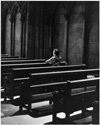Today is the day on our calendar that we honor St. Luke. I have a special fondness for Luke's Gospel. I spent a little time at the Catholic Encyclopedia web page this morning and found the following,
"St. Luke its always represented by the calf or ox, the sacrificial animal, because his Gospel begins with the account of Zachary, the priest, the father of John the Baptist. He is called a painter by Nicephorus Callistus (fourteenth century), and by the Menology of Basil II, A.D. 980. A picture of the Virgin in S. Maria Maggiore, Rome, is ascribed to him, and can be traced to A.D. 847 It is probably a copy of that mentioned by Theodore Lector, in the sixth century. This writer states that the Empress Eudoxia found a picture of the Mother of God at Jerusalem, which she sent to Constantinople (see 'Acta SS.', 18 Oct.). As Plummer observes. it is certain that St. Luke was an artist, at least to the extent that his graphic descriptions of the Annunciation, Visitation, Nativity, Shepherds. Presentation, the Shepherd and lost sheep, etc., have become the inspiring and favourite themes of Christian painters.The lectionary pages offer the following prayer,
St. Luke is one of the most extensive writers of the New Testament. His Gospel is considerably longer than St. Matthew's, his two books are about as long as St. Paul's fourteen Epistles: and Acts exceeds in length the Seven Catholic Epistles and the Apocalypse. The style of the Gospel is superior to any N.T. writing except Hebrews. Renan says (Les Evangiles, xiii) that it is the most literary of the Gospels. St. Luke is a painter in words. 'The author of the Third Gospel and of the Acts is the most versatile of all New Testament writers. He can be as Hebraistic as the Septuagint, and as free from Hebraisms as Plutarch. . . He is Hebraistic in describing Hebrew society and Greek when describing Greek society' (Plummer, introd.). His great command of Greek is shown by the richness of his vocabulary and the freedom of his constructions."
"Almighty God, who didst inspire thy servant Luke the physician to set forth in the Gospel the love and healing power of thy Son: Graciously continue in thy Church the like love and power to heal, to the praise and glory of thy Name; through the same thy Son Jesus Christ our Lord, who liveth and reigneth with thee, in the unity of the Holy Spirit, one God, now and for ever."Let me add my special thanks for the orderly witness of St. Luke and what his work has meant to me.




No comments:
Post a Comment